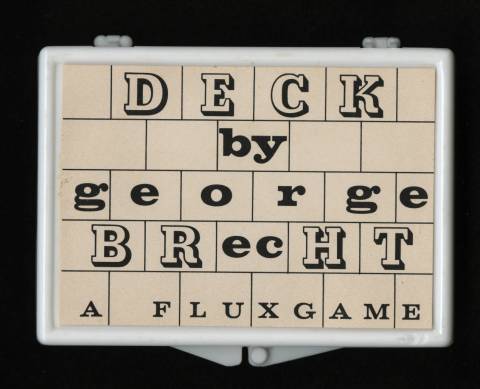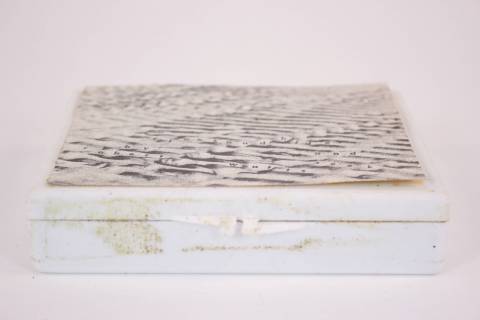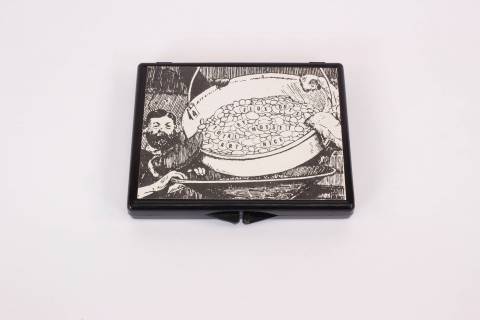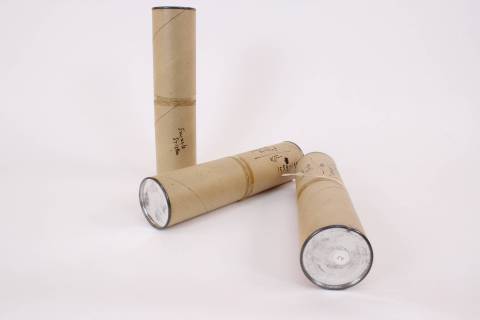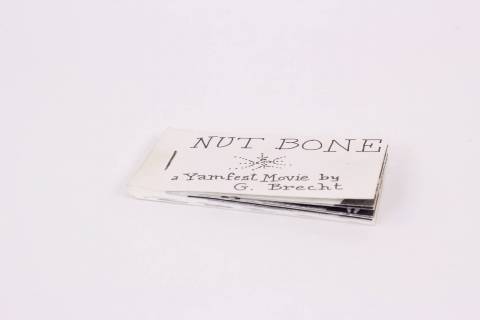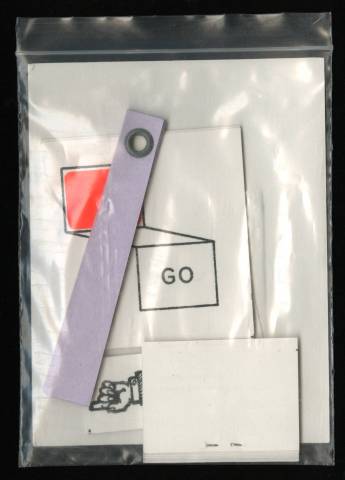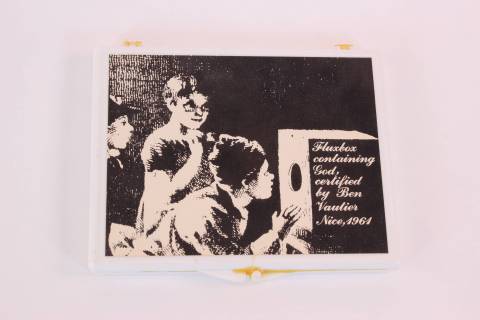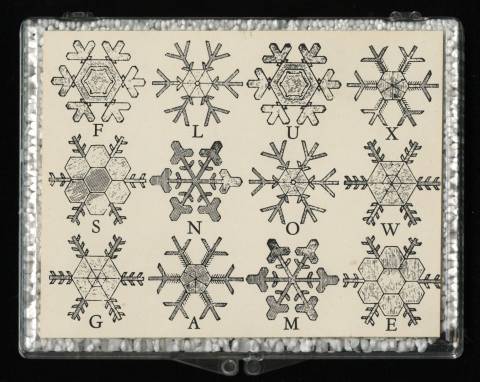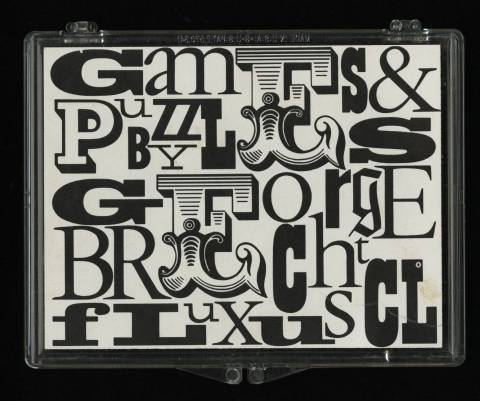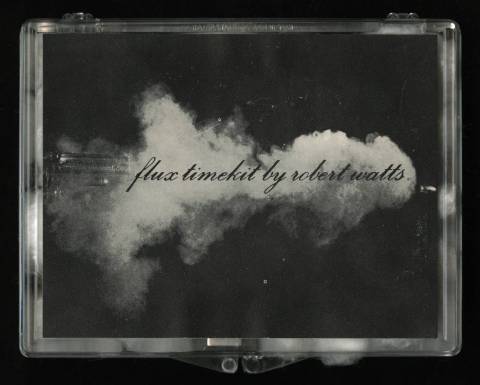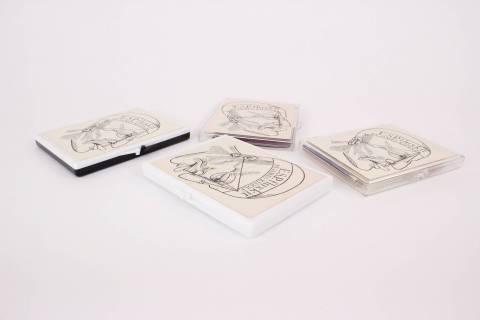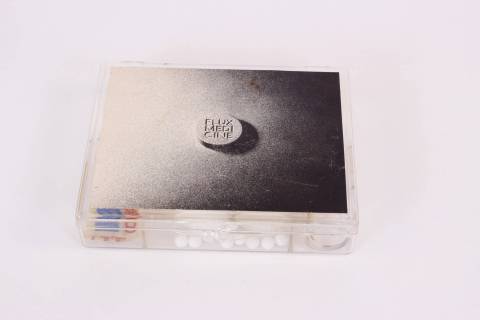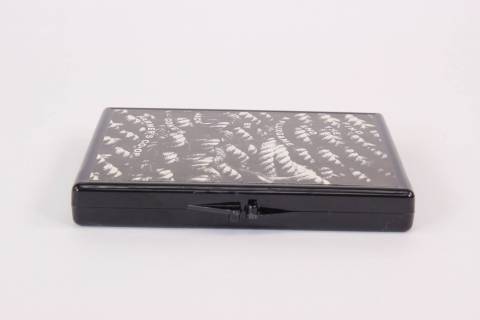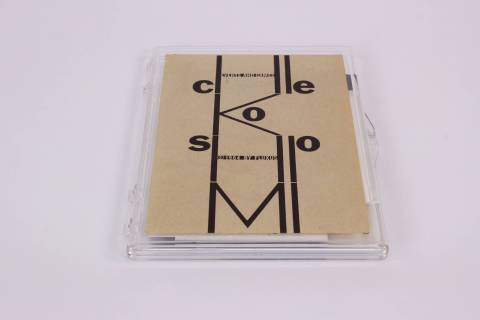Game
AMONG THE THINGS that Fluxus possesses, or so said Ben Vautier, is “wit,” “no money,” and a “sense of game.” Draw a map to get lost. Play baseball with a piece of fruit. Notably, many Fluxus events, scores, and instruction pieces were first conceived as or alongside of games—George Brecht’s Fluxus Games and Puzzles or George Maciunas’s Flux Snow Game, for instance. Games transform sets of instructions into phenomenological experience. They are vehicles for spontaneity, novelty, and creative play. Games encourage sensual engagement, both with the art object and with others who play. In this regard, Fluxus games break the art museum’s cardinal rules of no touching and no talking, since a sizeable body of Fluxus works requires tactile contact and social interaction. But unlike many traditional games, which depend upon a sense of pleasure derived from goal-driven competition, Fluxus games emphasize joyful absurdity, curiosity, and collective life.


